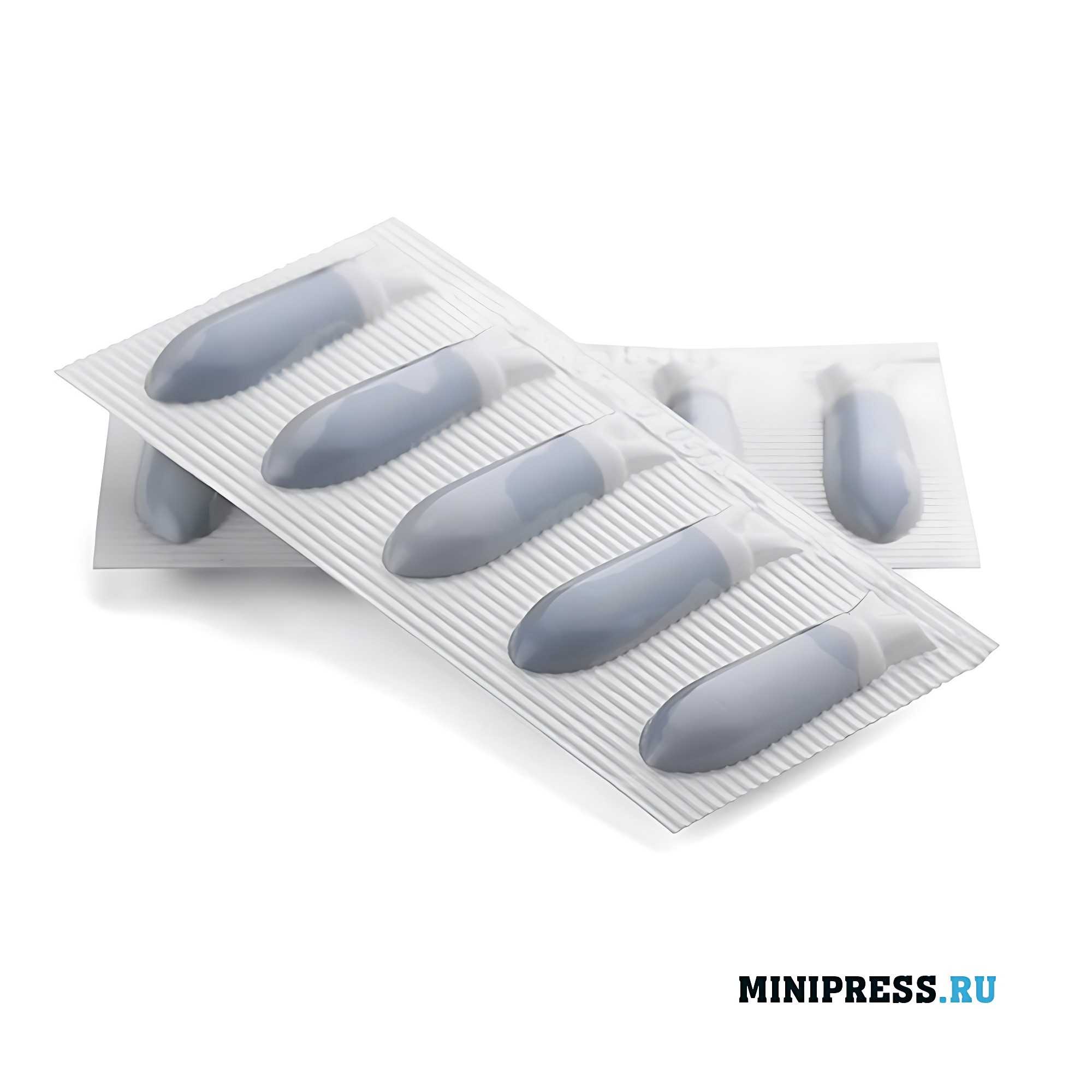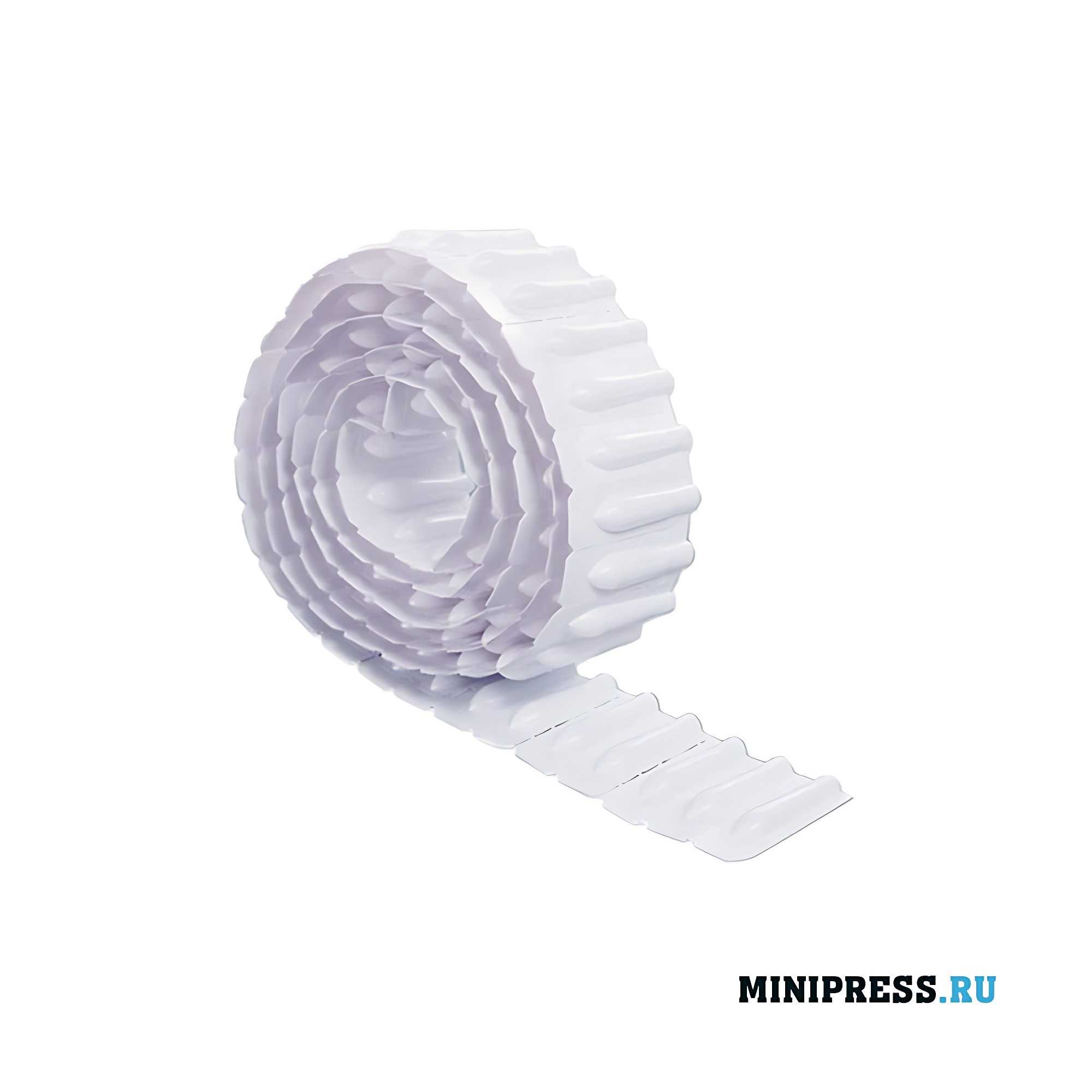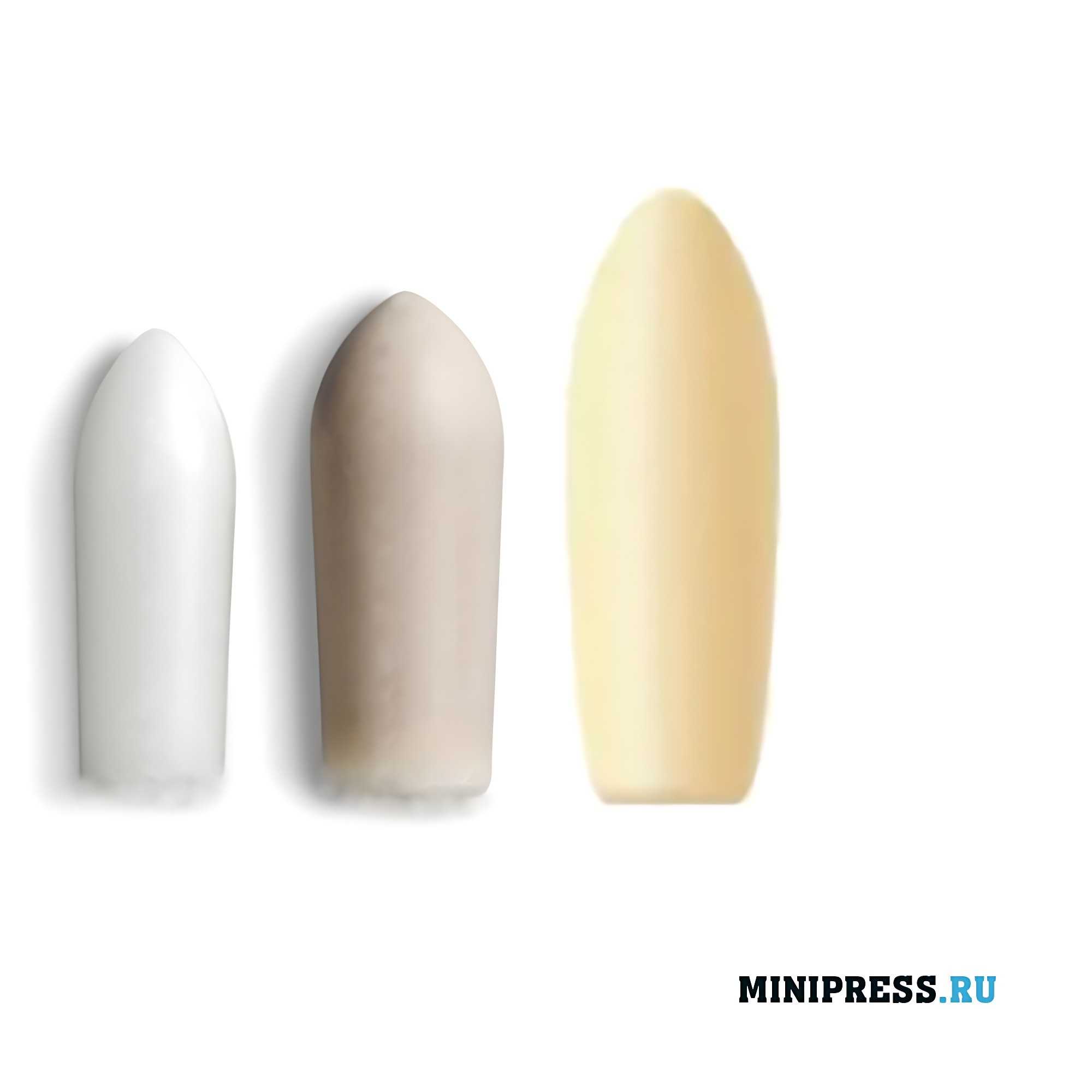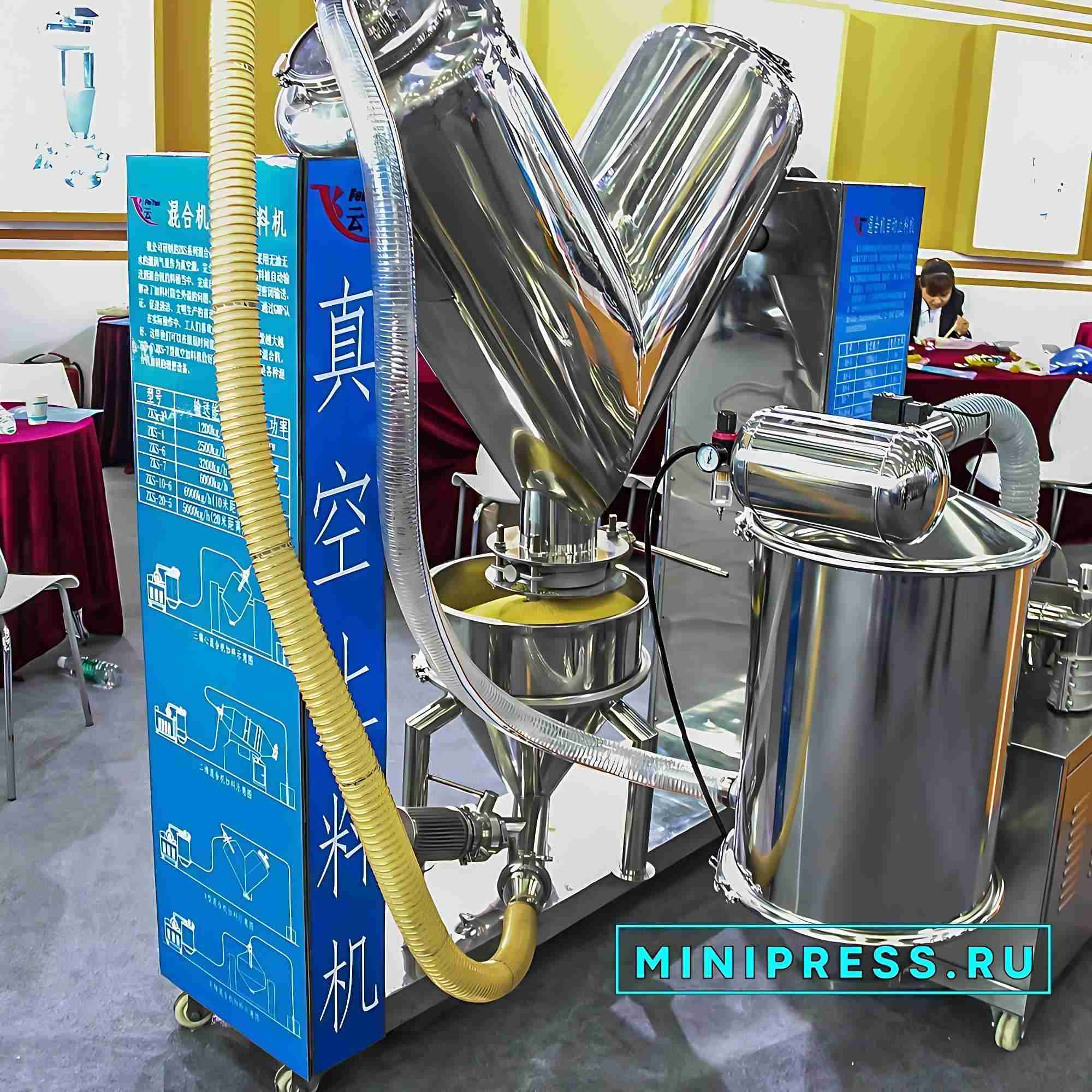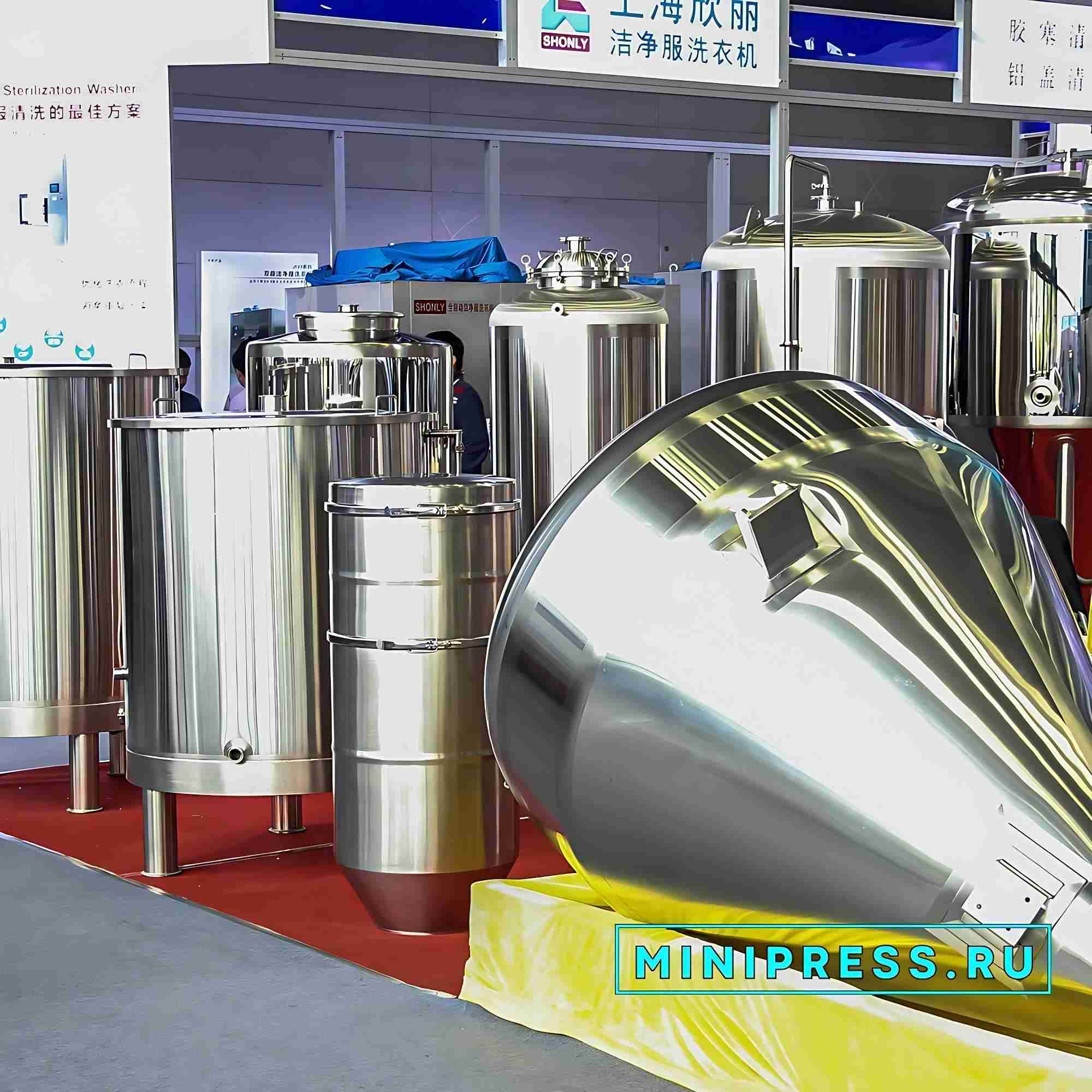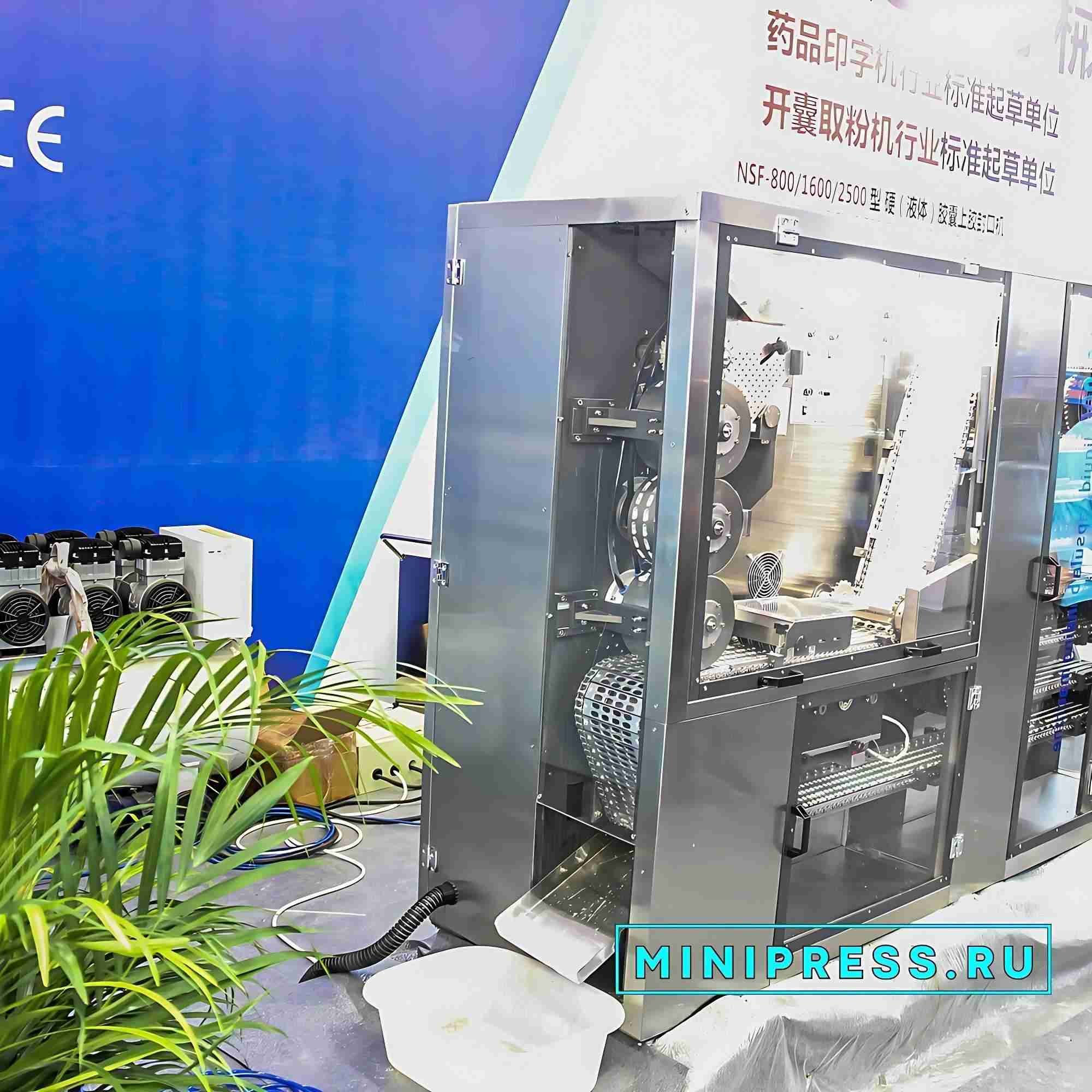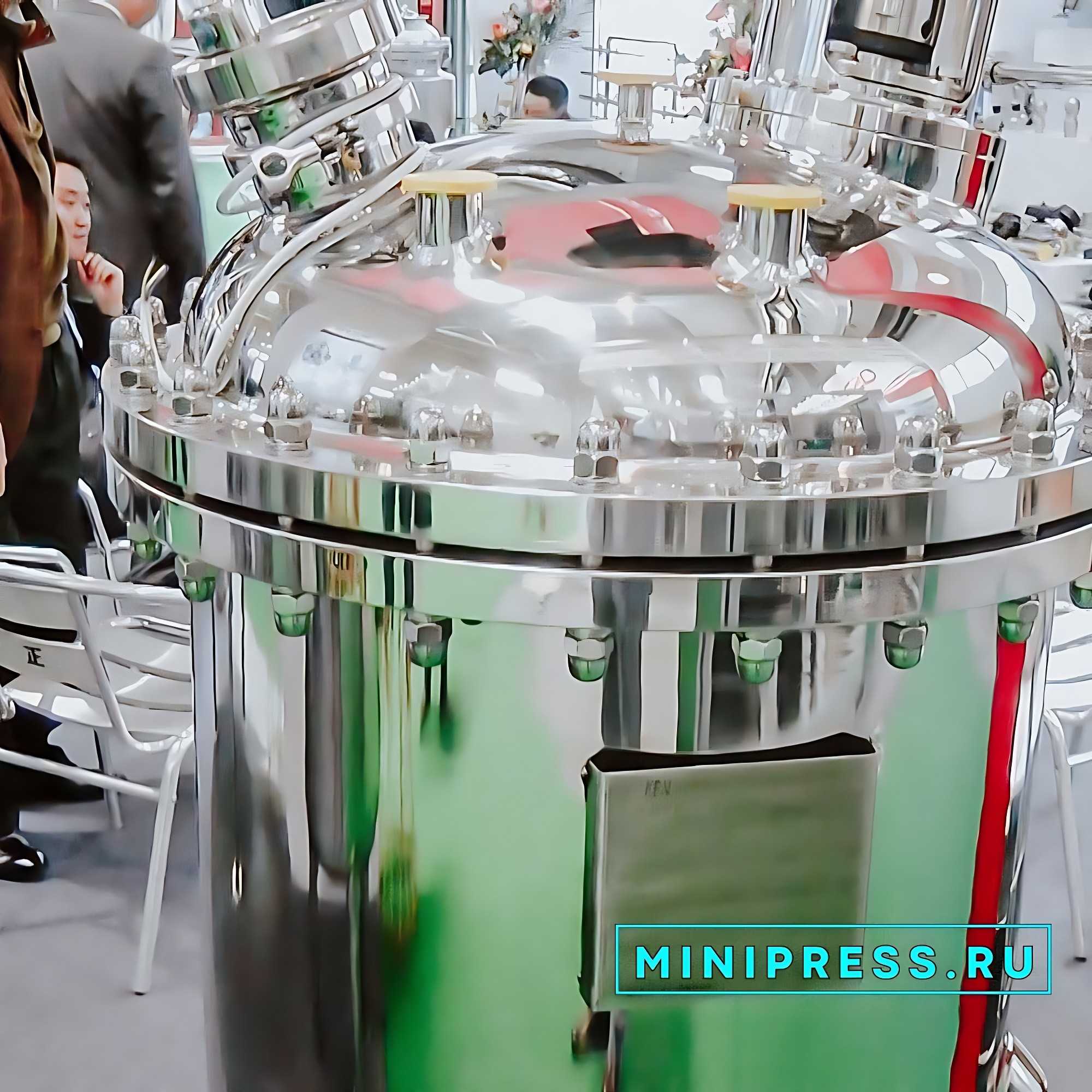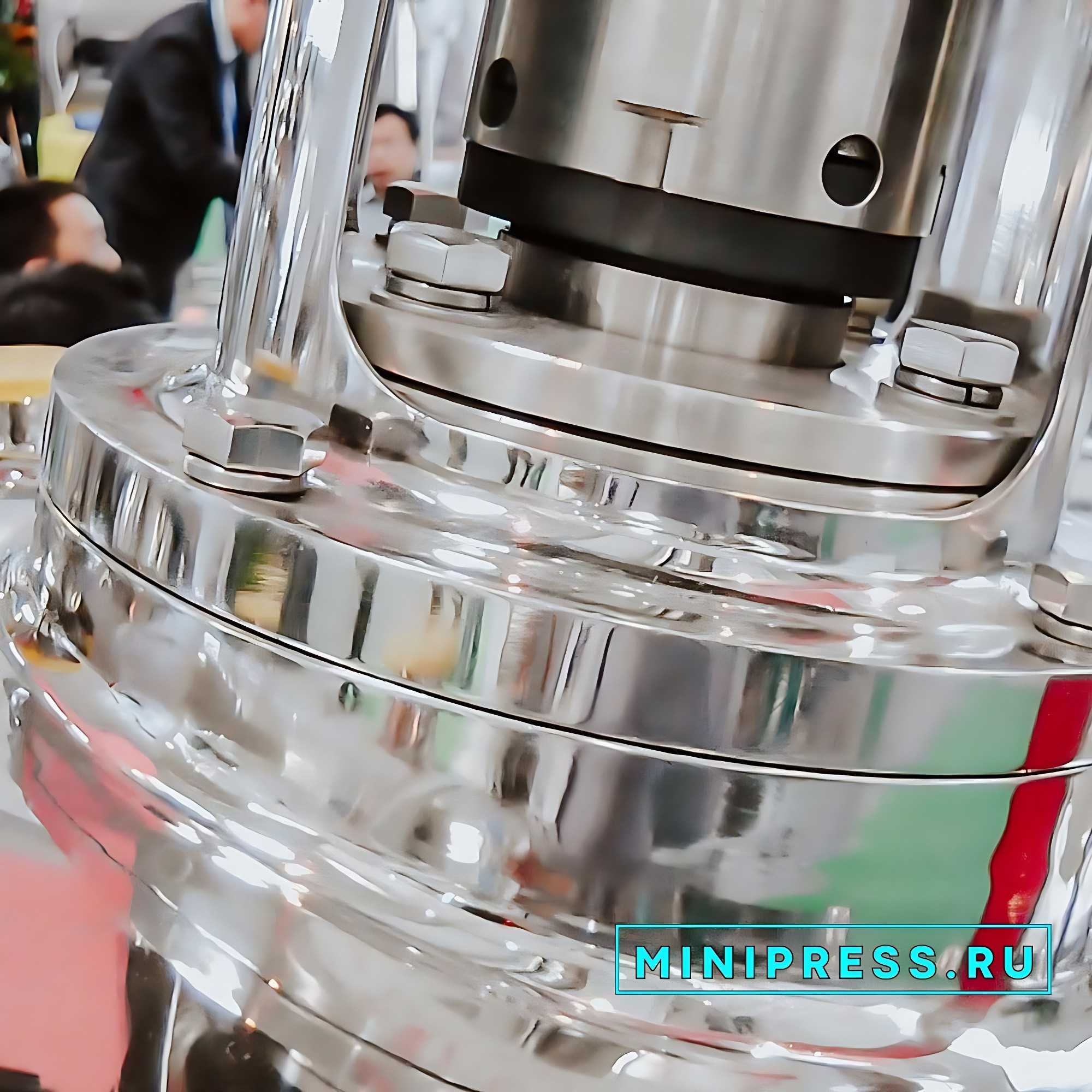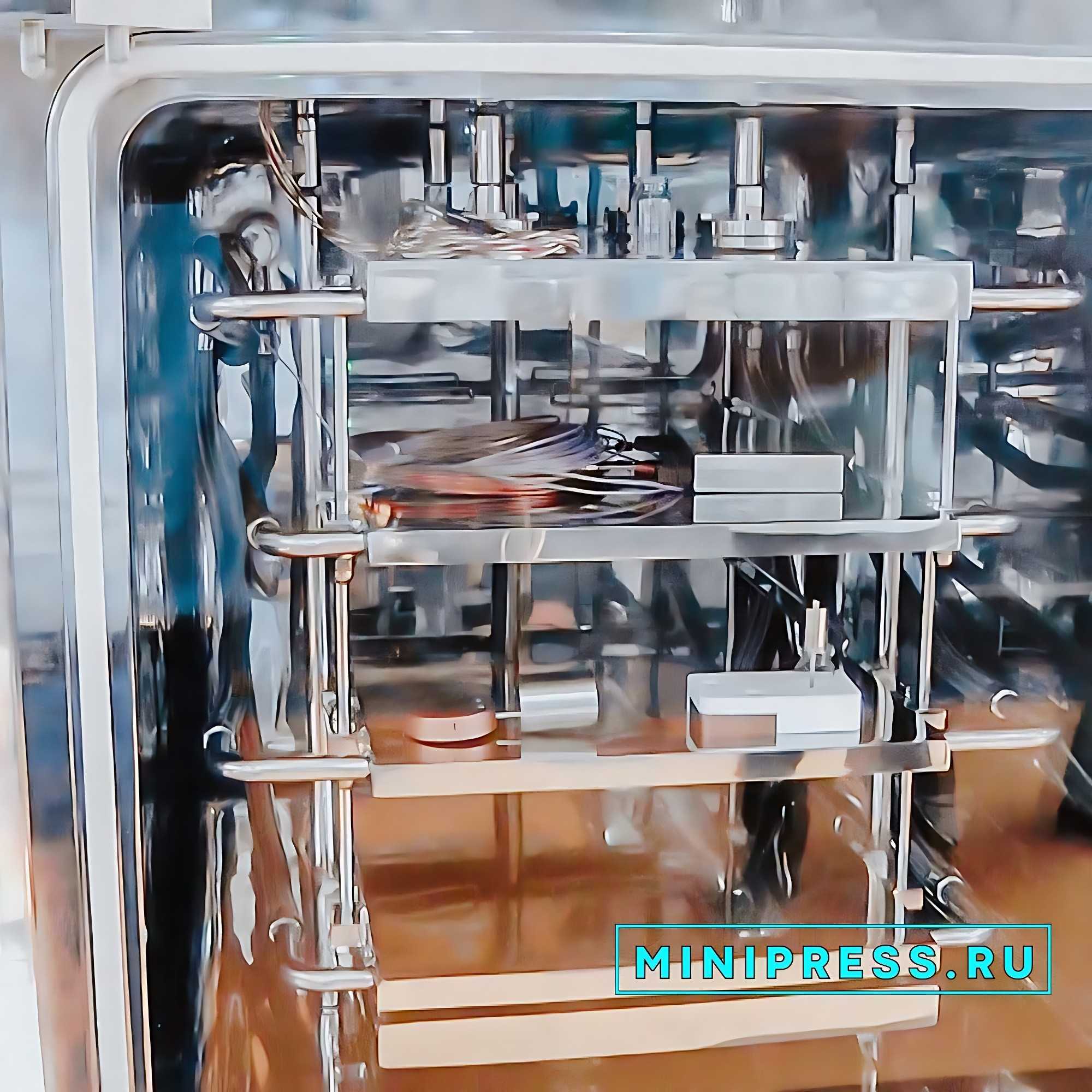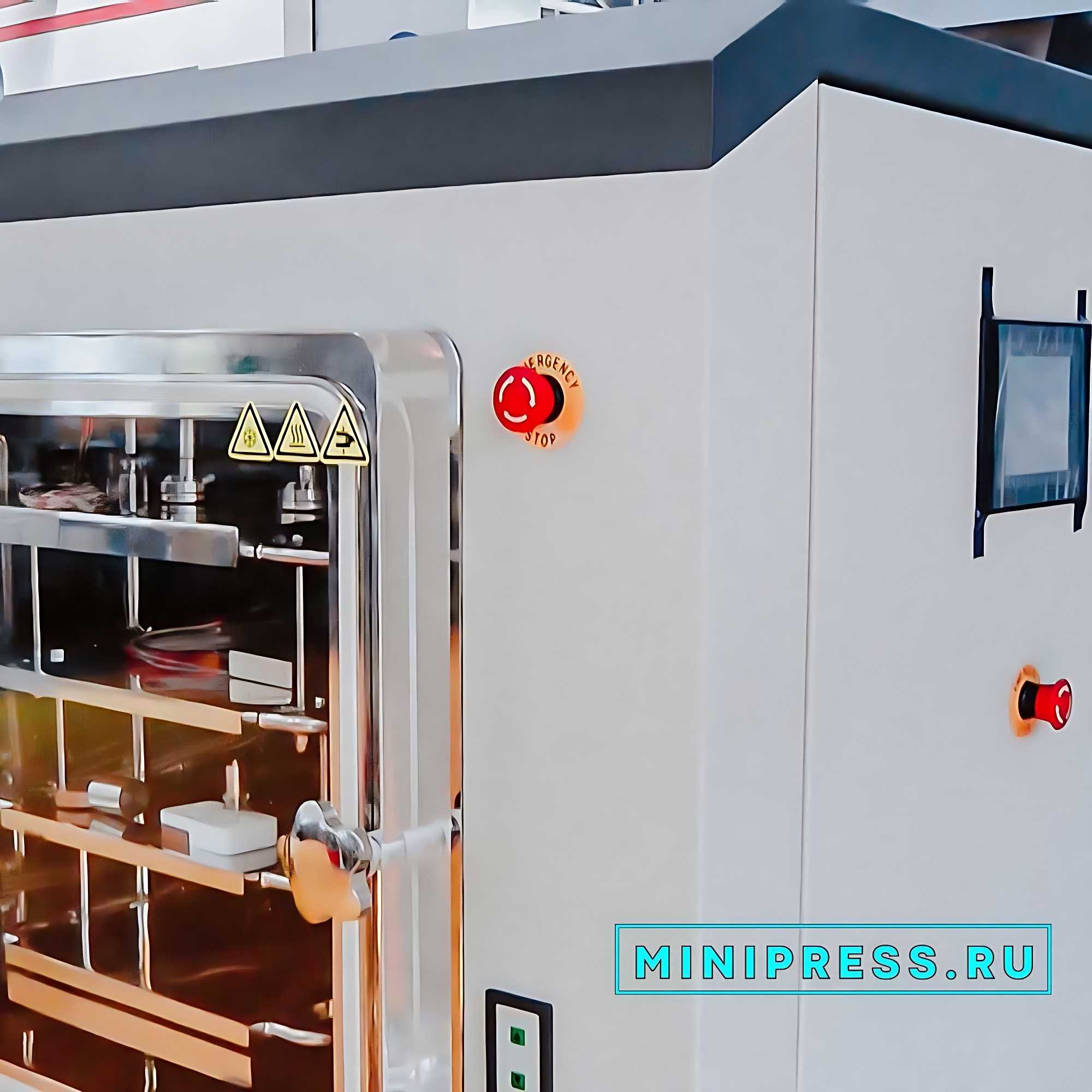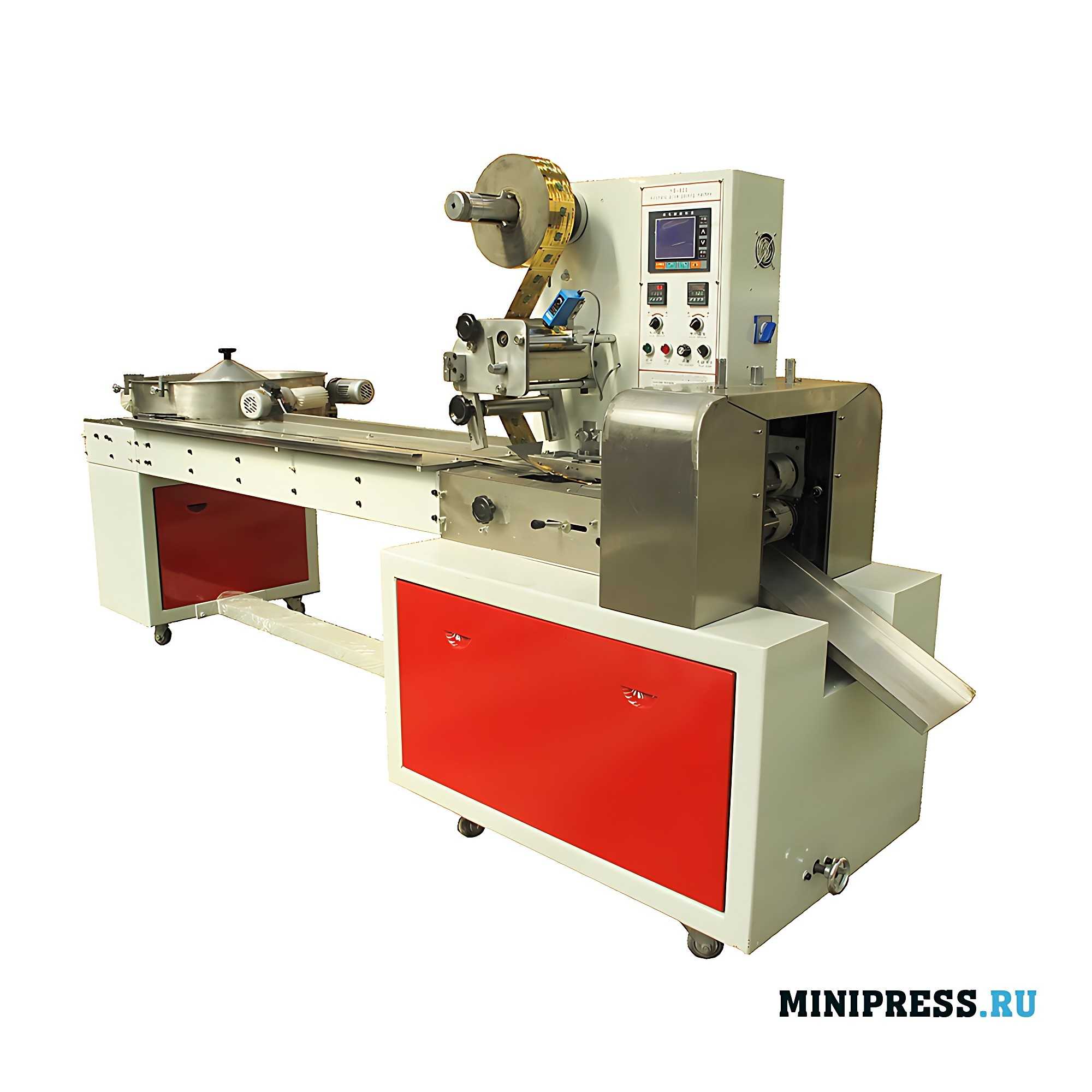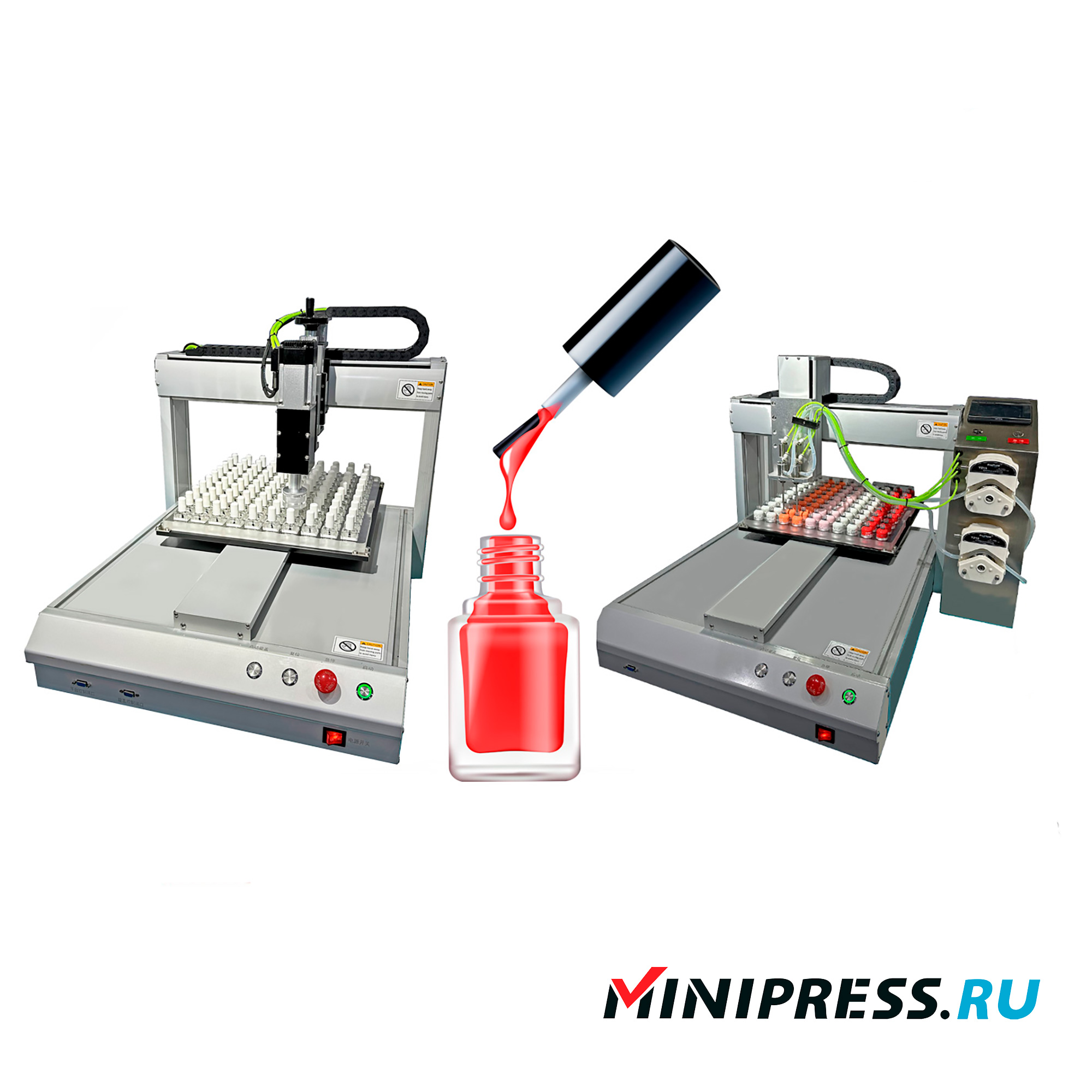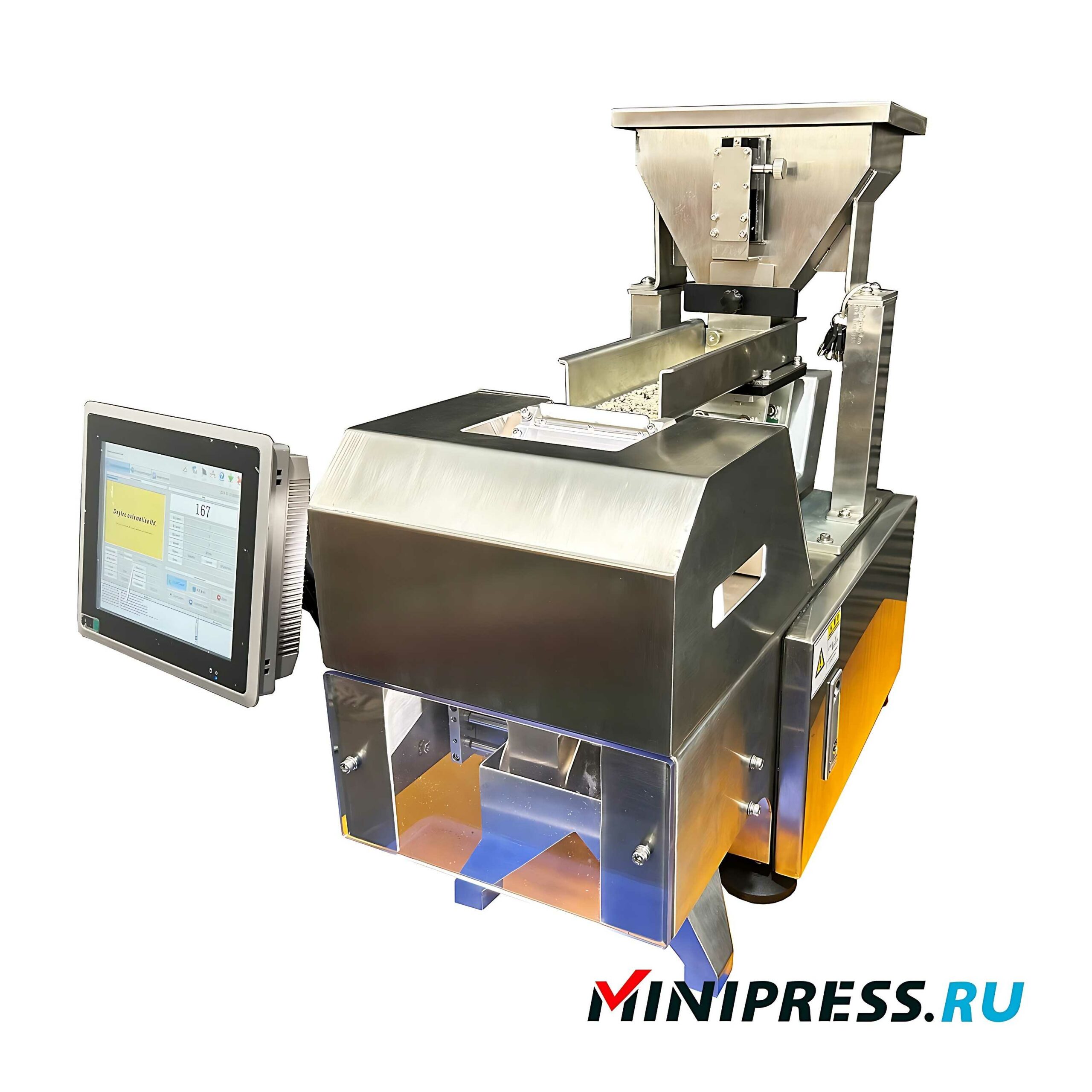 Video review of the model
Video review of the model
 Our service and customer service
Our service and customer service
In addition, the heated pipeline protects the product from solidification. However, when producing suppositories on lipophilic bases (plastic film is usually used for their molding), which have a more liquid consistency and a low melting point (32-37 ° C), a peristaltic pump is used.
This is due to the fact that the active substances introduced into the base in the form of powder fraction can settle in the unheated pipeline or tank when the machine stops and during the slow passage of the product through the pipeline. The use of peristaltic pump allows to maintain the necessary temperature of the product, excludes its stagnation in the pipeline and settling of active substances, providing homogeneity of the suppository mass consistency. Cells are filled by inserting the filling needle into the cell opening, through which the liquid suppository mass enters. All process data is displayed on the touch screen, which is also used to set the filling volume of the cells. After the cells have been filled, the suppository belt enters the cooling unit. The product cooling process can be carried out in two or four stages, depending on the solidification time of the components that make up the suppository mass. Two-stage cooling utilizes two cooling spiral chambers installed in series, and four chambers are used for four-stage cooling. The time of two-stage cooling is 9 min and four-stage cooling is 18 min. Thanks to the spiral tracks, the suppositories are cooled on both sides by a temperature-controlled air flow until the product is fully solidified, thus obtaining the optimal shape.
The cooled contour cells are fed into the sealing unit. At first, the suppository strip is preheated, after which the top of the contour cells is sealed. The use of the preheating stage, as well as in the molding unit, ensures qualitative and reliable sealing of the package.
After sealing the cells, the code or date is applied, the cells are perforated for easy cell separation and the top edge of the tape is trimmed. The suppositories can come out of the machine in the form of a ribbon (if docking with the cartoning machine is carried out through a special docking module) or in the form of cut blisters. The number of suppositories in a blister is set from the machine control panel.
 Pharmaceutical Glossary
Pharmaceutical Glossary
 Technical specifications
Technical specifications
Therefore, the use in the cooling stage allows a significant reduction in the curing time of the product, as well as making the process manageable and controllable. When the suppository mass in the cooling unit is fully cured, the spool with the finished product is transferred to an automatic container sealing and ribbon cutting machine. In the machine, the ribbon is sealed and cut into sections with the specified number of cells. Sealing is carried out by pulse heating and compression. The stable temperature of the sealing tool is ensured by two high-power fans. Simultaneously with sealing the coding operation is carried out. Coding of containers (series and date) is carried out by extrusion by means of a cliché. After sealing, the edges of the tape are automatically processed. This operation allows to significantly improve the appearance of the finished product. To control the process of cutting the tape into strips of a given length, a digital programmer is used, which sets the cutting range from 1 to 10 suppositories. The machines allow the production of suppositories in contoured cell packs made of aluminum and thermoformed plastic. In contrast to medium-capacity production, in the high-capacity industrial machines, the molding of the contour cells is done directly in the machine. High-precision machine with low noise level and high productivity (up to 22 thousand suppositories per hour). The machine is controlled through a programmable logic controller (PLC). The automatic machine has an optimal mode of operation, which avoids the formation of waste in the production process. The production process of suppositories begins with the formation of contoured cell packaging made of plastic film or aluminum foil. Two rolls of plastic film (one roll – printed, from which the front part of the suppository package is molded, the second roll – unprinted) are installed on roll holders. Plastic films from both rolls simultaneously enter the pre-heating unit, where they are quickly heated to the required temperature. The required film tension is regulated by a special device. The preheated plastic films are fed to the contour cell-shaped plastic film heat-welding unit.
 Additional information
Additional information
In this way, the two films are joined together over the entire surface, except for the interior of the cells. Then the film enters the molding unit, where, by blowing compressed air into the unsoldered space, the contoured cell is volumetrically molded. At the same time, a small hole remains open in the upper part of each cell, through which the cell is subsequently filled with suppository mass. In case of aluminum foil packaging production, the contour cell forming unit dismantles the units designed to work with plastic film – film preheating unit, film heat-welding unit and forming unit. The aluminum foil cell forming unit is installed in their place. Due to its heavy weight, this unit is installed in the machine by means of a lifting mechanism. It should be noted that the units are common for both types of packaging. Two rolls of aluminum foil (one printed and one unprinted) are installed on the roll holders. The foil tension is adjusted by the device. The aluminum foil strips from both rolls are fed in parallel to the contour cell forming unit, where the contour of the cell is mechanically extruded on the surface of the aluminum foil strip. Thus, in contrast to plastic foil, no preheating or compressed air is required for forming cells from aluminum foil. Two unconnected ribbons with the molded halves of the contoured cells exit the forming unit. The two strips are then joined together so that the cell halves are completely overlapping and are fed into the assembly where the strips are heated and finally thermally welded together. At the same time, as in the case of the plastic film, an opening is left open at the top of each cell for the introduction of the suppository mass. In this way, the contour cell formed of plastic film or aluminum foil serves at the same time as an injection mold. The plastic or aluminum foil-formed package is fed into the filling unit in the form of a ribbon. The suppository mass, heated to a temperature of 30-80 ° C, depending on the active ingredient and base from the reservoir comes through a pipeline to the volumetric dispenser, from where the product is automatically loaded into the cells.
To maintain the required temperature and homogeneous consistency of the suppository mass, the 80-liter reservoir is equipped with a water jacket and a stirrer. In the production of glycerin-based suppositories with a viscous consistency (they are usually molded in aluminum foil), the agitator provides homogeneous mixing of the suppository mass, heated to a temperature of about 80 ° C.
Order status tracking
Run through the order. V-shaped mixer for powders VM-50 and Mechanical tablet press PP-28 are waiting. 03/01/2026 02:00
Chloe, Checking delivery status. The shipment is already in Santorini warehouse. Please arrange for pickup. 03/01/2026 02:03
Hello, is it possible to buy your blistering machine for tablets and capsules MN-80 1 piece with delivery to Pittsburgh ( Europe) ? How much time for delivery ? 03/01/2026 02:10
Zoe, hello! We have many customers from your city. Delivery to this region is made by EMC. 03/01/2026 02:11
Roman, can you tell me if my rotary tablet press RZJ-35 has been shipped yet? Don't send it yet, I will send to your factory in China drawings of new punches, different design. 03/01/2026 02:20
Good afternoon, Emma! We're pausing the shipment. Send drawings to the office mail. The terms of production of new punches 20 working days. 03/01/2026 02:21
Good day , Electronic conveyor belt package weight detector DK-05 when will we receive in Crete ? 03/01/2026 02:30
Hello Mia, your shipment is in the customs warehouse, in the interval from 10:00-12:00 your manager Natalia will contact you. 03/01/2026 02:32
I'm waiting to get my XL-12 plastic bottle filling and capping machine to Vatican City, then I want to buy an automatic capsule machine model GN-28 03/01/2026 02:40
Good afternoon, Lila! On the first question - the shipment will arrive in Vatican City In the afternoon. On the second question - the model GN-28 will be processed under a new contract ? Contact the office. 03/01/2026 02:44
Good day, I want in the morning to get FF-02 tablet and capsule filling machine in Dublin? 03/01/2026 02:50
Good afternoon, Jayden! We have contacted the transportation company, your shipment is arriving in Dublin without delay. Please wait for a call from a representative of Business Lines. 03/01/2026 02:52
I've been calling your office since this morning, and no one's picking up the phone. 03/01/2026 03:00
Good afternoon, Violet! The office will be open from 9:00 GMT. We'll be in touch. 03/01/2026 03:03
Good day, I want after lunch to get FF-02 tablet and capsule filling machine in Granada? 03/01/2026 03:10
Good afternoon, Olivia! We have contacted the transportation company, your shipment is arriving in Granada without delay. Please wait for a call from a representative of Business Lines. 03/01/2026 03:10
The BB-152 liquid filling machine arrived from you today, remember us ? Where's the paperwork? 03/01/2026 03:20
{The original shipping documents will be delivered to Reykjavik tomorrow until 15:30. Please send the signed copies to us. 03/01/2026 03:24
The BB-152 liquid filling machine arrived from you today, remember us ? Where's the paperwork? 03/01/2026 03:30
{The original shipping documents will be delivered to Riga before lunch. Please send the signed copies to us. 03/01/2026 03:32
- AUTOMATIC EQUIPMENT FOR REMOVING TABLETS AND CAPSULES FROM BLISTERS
- EQUIPMENT FOR PRINTING LOGO ON TABLETS AND CAPSULES
- EQUIPMENT FOR FILLING HARD GELATIN CAPSULES WITH POWDER
- SPRAY DRYING EQUIPMENT FOR SUSPENSIONS
- BOTTLE FILLING AND CAPPING EQUIPMENT
- EQUIPMENT FOR THE PRODUCTION OF TABLETS
- EQUIPMENT FOR FILLING CREAMS AND SEALING PLASTIC TUBES
- HIGH-PRECISION DOSING MACHINES POWDER FILLING MACHINES
- EQUIPMENT FOR PACKING POWDERS INTO VIALS
- MACHINES FOR THE PRODUCTION OF SUPPOSITORIES
- EQUIPMENT FOR FILLING AND SEALING GLASS AMPOULES
- EQUIPMENT FOR COATING TABLETS
- EQUIPMENT FOR PACKAGING TABLETS AND CAPSULES IN PLASTIC BOTTLES
- EQUIPMENT FOR WASHING AND STERILIZING BOTTLES
- MACHINES FOR FORMING AND FILLING PLASTIC AMPOULES
- EQUIPMENT FOR POLISHING AND DEDUSTING TABLETS AND CAPSULES
- EQUIPMENT FOR COUNTING AND PACKAGING TABLETS AND CAPSULES IN BOTTLES
- EQUIPMENT FOR SCREW FEEDING OF POWDERS
- EQUIPMENT FOR AUTOMATIC BOTTLE FEEDING FOR FILLING LINES
- AUTOMATIC PHARMACEUTICAL CENTRIFUGES
- EQUIPMENT FOR EFFICIENT MIXING OF POWDERS
- EQUIPMENT FOR HOMOGENIZING CREAMS AND OINTMENTS
- EQUIPMENT FOR VACUUM TRANSPORTATION OF POWDERS
- POWDER GRANULATION EQUIPMENT
- EQUIPMENT FOR WEIGHT CONTROL AND SORTING OF CARDBOARD BOXES WITH MEDICINE
- EQUIPMENT FOR APPLYING THE EXPIRATION DATE AND BATCH NUMBER TO PRODUCTS
- EQUIPMENT FOR PACKAGING FOOD PRODUCTS IN DOY-PACK PACKAGES
- EQUIPMENT FOR FILLING AND PACKAGING HERBAL TINCTURES
- EQUIPMENT FOR FILLING LIQUIDS IN PLASTIC AND METAL BARRELS
- EQUIPMENT FOR THE MANUFACTURE AND PACKAGING OF WET ALCOHOL WIPES
- AUTOMATIC EQUIPMENT FOR BLISTER PACKAGING
- EQUIPMENT FOR PACKAGING BULK MATERIALS IN PLASTIC BAGS
- EQUIPMENT FOR VACUUM PACKAGING IN PLASTIC BAGS
- FLOW-PACK PACKAGING MACHINES
- EQUIPMENT FOR PACKAGING TABLETS IN STRIPS AND TUBES
- EQUIPMENT FOR WRAPPING CARDBOARD BOXES WITH CELLOPHANE
- EQUIPMENT FOR METAL DETECTOR IN GELATIN CAPSULES AND TABLETS
- EQUIPMENT FOR PACKING TEA INTO TEA BAGS WITH THREAD AND LABEL
- AUTOMATIC EQUIPMENT FOR SELF-ADHESIVE LABELS ON PACKAGING
- EQUIPMENT FOR PACKAGING PRODUCTS IN A FLOW PACK
- EQUIPMENT FOR INDUCTION SEALING OF ALU FOIL BOTTLES
- DESKTOP EQUIPMENT FOR HIGH-SPEED EMULSION PRODUCTION
- SEMI-AUTOMATIC EQUIPMENT FOR BLISTER PACKAGING
- EQUIPMENT FOR LABORATORY TESTING OF MEDICINES
- EQUIPMENT FOR POWDERING PHARMA RAW MATERIALS
- EQUIPMENT FOR THE PRODUCTION OF FISHING BOILIES
- SEMI-AUTOMATIC EQUIPMENT FOR FILLING GELATIN CAPSULES
- MACHINES PRINTING EXPIRATION DATE AND LOT NUMBER
- DESKTOP EQUIPMENT FOR MIXING POWDERS
- EQUIPMENT FOR MIXING LIQUIDS WITH MICROWAVE HEATING
- EQUIPMENT FOR AUTOMATIC DOSING OF CREAMS AND OINTMENTS
- MANUAL EQUIPMENT FOR FILLING GELATIN CAPSULES WITH POWDER
- DESKTOP EQUIPMENT FOR LIQUID DOSING
- PERISTALTIC PUMPS DISPENSERS
- EQUIPMENT FOR VIBRATING SIEVING OF POWDERS
- EQUIPMENT FOR PACKAGING TABLETS AND CAPSULES IN PLASTIC BOTTLES
- HIGH-PRECISION DOSING MACHINES POWDER FILLING MACHINES
- EQUIPMENT FOR COUNTING AND PACKAGING TABLETS AND CAPSULES IN BOTTLES
- EQUIPMENT FOR THE PRODUCTION OF TABLETS
- EQUIPMENT FOR COATING TABLETS
- MACHINES FOR FORMING AND FILLING PLASTIC AMPOULES
- AUTOMATIC EQUIPMENT FOR REMOVING TABLETS AND CAPSULES FROM BLISTERS
- EQUIPMENT FOR WASHING AND STERILIZING BOTTLES
- BOTTLE FILLING AND CAPPING EQUIPMENT
- EQUIPMENT FOR FILLING CREAMS AND SEALING PLASTIC TUBES
- EQUIPMENT FOR POLISHING AND DEDUSTING TABLETS AND CAPSULES
- EQUIPMENT FOR FILLING AND SEALING GLASS AMPOULES
- EQUIPMENT FOR PRINTING LOGO ON TABLETS AND CAPSULES
- MACHINES FOR THE PRODUCTION OF SUPPOSITORIES
- EQUIPMENT FOR PACKING POWDERS INTO VIALS
- SPRAY DRYING EQUIPMENT FOR SUSPENSIONS
- EQUIPMENT FOR FILLING HARD GELATIN CAPSULES WITH POWDER
- EQUIPMENT FOR HOMOGENIZING CREAMS AND OINTMENTS
- EQUIPMENT FOR AUTOMATIC BOTTLE FEEDING FOR FILLING LINES
- POWDER GRANULATION EQUIPMENT
- EQUIPMENT FOR VACUUM TRANSPORTATION OF POWDERS
- EQUIPMENT FOR EFFICIENT MIXING OF POWDERS
- AUTOMATIC PHARMACEUTICAL CENTRIFUGES
- EQUIPMENT FOR SCREW FEEDING OF POWDERS
- EQUIPMENT FOR FILLING AND PACKAGING HERBAL TINCTURES
- EQUIPMENT FOR INDUCTION SEALING OF ALU FOIL BOTTLES
- EQUIPMENT FOR THE MANUFACTURE AND PACKAGING OF WET ALCOHOL WIPES
- FLOW-PACK PACKAGING MACHINES
- EQUIPMENT FOR PACKING TEA INTO TEA BAGS WITH THREAD AND LABEL
- EQUIPMENT FOR APPLYING THE EXPIRATION DATE AND BATCH NUMBER TO PRODUCTS
- EQUIPMENT FOR VACUUM PACKAGING IN PLASTIC BAGS
- EQUIPMENT FOR WRAPPING CARDBOARD BOXES WITH CELLOPHANE
- AUTOMATIC EQUIPMENT FOR SELF-ADHESIVE LABELS ON PACKAGING
- EQUIPMENT FOR METAL DETECTOR IN GELATIN CAPSULES AND TABLETS
- EQUIPMENT FOR PACKAGING PRODUCTS IN A FLOW PACK
- EQUIPMENT FOR PACKAGING TABLETS IN STRIPS AND TUBES
- EQUIPMENT FOR PACKAGING FOOD PRODUCTS IN DOY-PACK PACKAGES
- EQUIPMENT FOR PACKAGING BULK MATERIALS IN PLASTIC BAGS
- AUTOMATIC EQUIPMENT FOR BLISTER PACKAGING
- EQUIPMENT FOR WEIGHT CONTROL AND SORTING OF CARDBOARD BOXES WITH MEDICINE
- EQUIPMENT FOR FILLING LIQUIDS IN PLASTIC AND METAL BARRELS
- PERISTALTIC PUMPS DISPENSERS
- EQUIPMENT FOR THE PRODUCTION OF FISHING BOILIES
- SEMI-AUTOMATIC EQUIPMENT FOR FILLING GELATIN CAPSULES
- DESKTOP EQUIPMENT FOR HIGH-SPEED EMULSION PRODUCTION
- DESKTOP EQUIPMENT FOR LIQUID DOSING
- MANUAL EQUIPMENT FOR FILLING GELATIN CAPSULES WITH POWDER
- EQUIPMENT FOR AUTOMATIC DOSING OF CREAMS AND OINTMENTS
- EQUIPMENT FOR LABORATORY TESTING OF MEDICINES
- DESKTOP EQUIPMENT FOR MIXING POWDERS
- EQUIPMENT FOR MIXING LIQUIDS WITH MICROWAVE HEATING
- EQUIPMENT FOR POWDERING PHARMA RAW MATERIALS
- EQUIPMENT FOR VIBRATING SIEVING OF POWDERS
- SEMI-AUTOMATIC EQUIPMENT FOR BLISTER PACKAGING
- MACHINES PRINTING EXPIRATION DATE AND LOT NUMBER








 8221
8221 7666534
7666534

